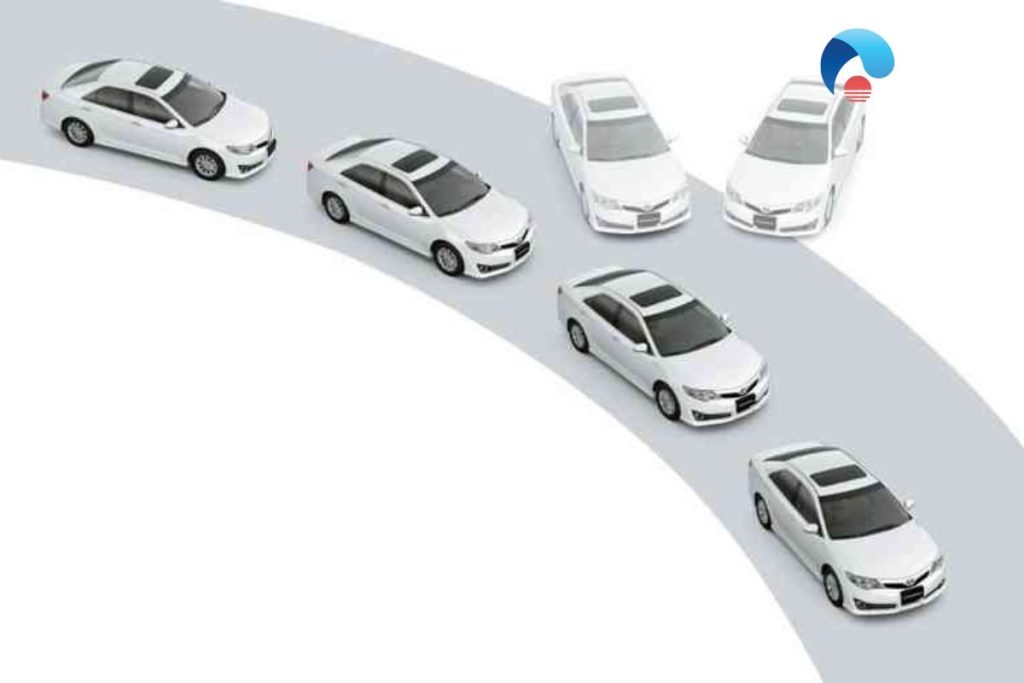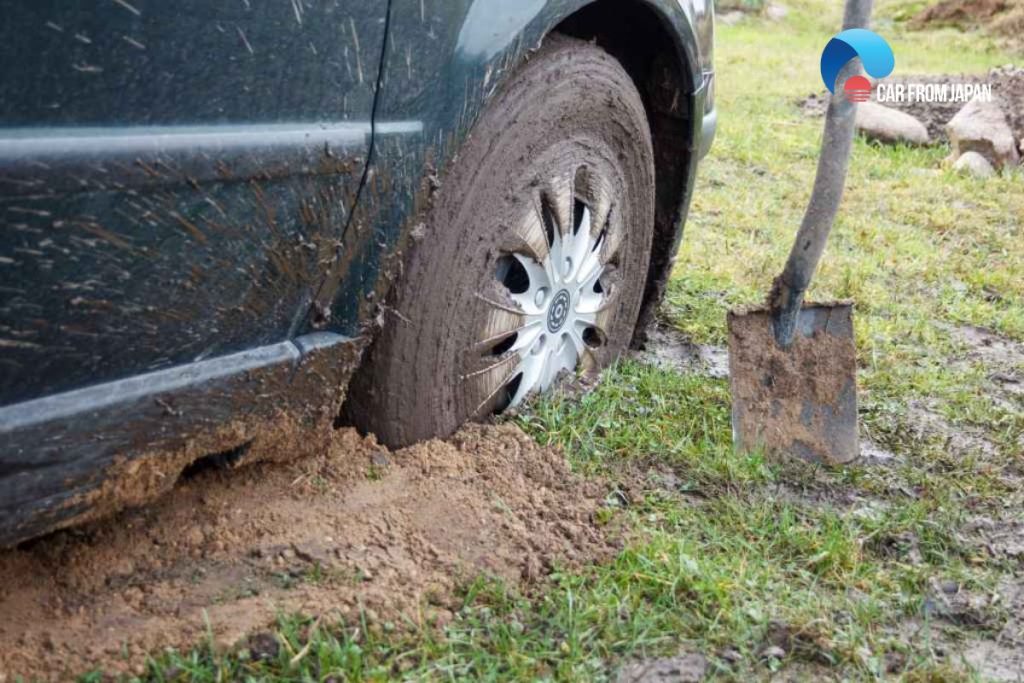What keeps a car spinning out of control and smashing into something when the driver turns around corners at a high speed? A traction control.
By reducing unwanted drifting and wheel spins, this safety option makes it safer and easier to drive on slippery surfaces and around tight corners.
So are there any benefits of turning traction control off? Let’s follow along with Car From Japan!
Contents
What Is Traction Control?
Traction control is an automobile safety feature that helps a car to make use of all available traction on the surface in certain conditions. The feature kicks in when your car struggles to speed up on slippery or low-friction road surfaces.
The system has wheel speed sensors for monitoring the rotation speed of all front wheels and a hydraulic modulator that pumps the brakes.
When the sensors detect wheel slippage during acceleration, they send information to the electronic control unit (ECU). The ECU also continuously monitors the rotation speed of the wheels to check if they are losing traction.
If that is the case, it commands the hydraulic modulator to pump the brake, which involves applying and releasing the brake in quick succession, to the affected wheel.

See More: The Danger of a Flashing Electronic Throttle Control Light
The traction control applies the brakes to slow the car down until it gains sufficient traction. In some vehicles, the system decreases engine power to the wheels experiencing traction loss.
How Does Traction Control Work?
Before knowing the benefits of turning traction control off, you should have a clear idea about its functions and how it helps in certain conditions.
This system is completely dependent on the traction control sensors. Due to the fact that there are four of these sensors, one on each wheel. Wheel speed sensors are another name for these sensors.
They are intended to measure the speed of the wheel. A tone ring on each wheel revolves as the wheel rotates around the axle. This tone ring also has grooves on it.
The tone ring detects the motion as the wheel rotates and records the input. This data is then sent to the powertrain control module.
The throttle actuator receives input from the powertrain control module. The engine then does its magic.
It either reduces the gasoline to the engine, forcing it to slow down, or it slightly delays the ignition timing, causing the engine to slow down but the wheels not to spin. This system employs more ways, although these are the most prevalent.
This procedure begins instantly when the wheel sensors detect even a tiny loss of traction.
They will not enable your automobile to sway even slightly. This method will keep you on the road and prevent you from getting into a risky scenario and maybe injuring yourself.
Benefits Of Turning Traction Control Off
Why turn off traction control? You need the feature only in certain conditions, especially when the road is slippery.
The conditions where this off-mode traction control will come in handy are.
Getting unstuck
While traction control can keep your car going in a straight path in rain or snow, it can also prevent it from moving forward if it stucks in the snow or sand.
If your car gets stuck, chances are one of the wheels is spinning. Logic suggests that leaving traction control on may assist, because it cuts power to the wheel that keeps spinning. But it may actually cut power altogether, which will exacerbate the condition.
In such an instance, turn traction control off in snow or sand so you may utilize the “rocking” approach to ultimately get the car out (reverse the car a few inches, then advance a few inches).

Driving uphill on loose or slippery surfaces
Another instance where traction control might be problematic is when driving or speeding up on an uphill road where the surface feels loose because of gravels and stones or slippery.
Again, you would believe that traction control can help in this circumstance. But in cases, it may cause the wheels to slip and stop power to them entirely.
While driving up a steep and slick hill, the system limiting power to the wheels might force you to go nowhere fast.
In this scenario, switch off the traction control and drive gently up the slope, which will be made simpler if your vehicle is equipped with snow tires, chains, or cables.
Go on icy road
Accelerating on an icy road when you are at a green traffic light with cars lining behind you can also not benefit from the traction control.
In this situation, turning off traction control can have potential benefits, but it also comes with significant risks like increased chance of loss of control or difficulty in stopping.
Traction control is designed to limit wheel slip and improve stability during acceleration, especially on slippery surfaces like ice.
However, there are scenarios where temporarily disabling traction control might be advantageous.
Controlled wheel spin
By turning off traction control, you gain the ability to modulate the amount of wheel spin manually. Gentle wheel spin can help you maintain forward momentum on an icy surface where tires might otherwise struggle to find traction.
More predictable acceleration
Traction control can sometimes be overly sensitive on extremely slippery surfaces, leading to abrupt cuts in power and unpredictable vehicle behavior. Disabling it allows you to have more predictable and smoother acceleration.
Given the risks involved, it is generally safer to keep traction control when driving on icy roads, especially in situations where other vehicles are around you.
Muddy patches
When the wheels lose traction due to hitting a muddy patch on a road, turning off traction control might provide some benefits.
Regain momentum
Turning off traction control may allow the tires to spin more freely. This increased wheel spin could help clear the mud from the tire treads and potentially obtain forward momentum.
Easier maneuvering
On some off-road or unpaved surfaces, like muddy trails, traction control off allow easier maneuvering by letting the wheels slip and adapt to the uneven terrain.

Disadvantages of Turning Traction Control Off
Aside from the benefits of turning traction control off, there are several disadvantages or risks associated with turning off the traction control on cars.
Assume it is pouring rain outside and the roads are extremely slick. You’re driving your rear-wheel-drive automobile along the road when you abruptly lose control, with no warning or awareness.
In this case, you may collide with anything sideways and end up in a tree or a wall. Or even take part in a rollover.
This is why you must have traction control activated on a rear-wheel-drive vehicle. You simply cannot operate a rear-wheel-drive vehicle without traction control.
Moreover, another downside to disabling traction control is the potential for increased wear and tear on tires and drivetrain components.
Excessive wheel spin, which traction control typically minimizes, can easily cause premature tire wear and strain on transmissions, differentials, and other drivetrain components.
While these effects are not immediately severe, if left untreated overtime, they can lead to much more expensive repairs and replacements.
Vehicles equipped with traction control typically have an on/off switch or button. The location and shape of the system control button will vary depending on the make and model of the vehicle.
You will see this as a button with a car-like symbol with squiggly lines behind it, sometimes accompanied by the letters “TCS” (Traction Control System) or “TC”.
Pressing this button will usually light up the corresponding warning light on your dashboard, letting you know that traction control has been disabled.
On some modern vehicles, traction control settings are accessible through the touchscreen infotainment system. Simply navigate through the menus to find the off option, and the system will be disabled accordingly.
The control button may also be located on or near the steering wheel or on the center console among other controls in the vehicle. You may need to look a little further to find the exact location of the button.
Combined with other stability control systems
On some vehicles, the traction control off button is combined with the Electronic Stability Control (ESC) or stability management system. Disabling ESC may also disable traction control. Many vehicles also have separate settings for each system.
If you are unsure of the location of the traction control button on your particular vehicle, consult your vehicle’s separate owner’s manual.
It will provide clear instructions on the location and how to operate the system in the most basic way.
FAQs on Turning Traction Control Off
What causes the ABS and traction control lights to turn on?
Most of the time, this problem is caused by a lack of braking fluid or a problem with the master cylinder.
Wheel speed sensor issues or a faulty ABS module. These are the most often encountered problems.
How do you know traction control is functioning properly?
Traction control is something you won’t realize is operating until you need it. Even if it’s turned on, you won’t notice it on your daily commute.
When you lose traction and the traction control comes in, the light will flash momentarily to signal that it is striving to restore traction.
How do traction and stability control differ?
A lesser-known safety function is stability control. But it’s still there, and it’s assisting you in staying safe while driving.
While traction and stability control are not the same thing, they work in tandem to provide a safe driving experience.
They employ the same sensors in all four wheels, as well as the ABS that is already in your vehicle.
Similarly to how traction control provides brakes to a wheel that is spinning too rapidly, the stability control system will apply brakes to a wheel that is not performing the correct movement.
Is traction control more fuel-efficient?
Traction control has little influence on fuel economy. It is rarely utilized, and even when it is, it has no effect on your gasoline.
Check out this video from Helpful DIY for more information about traction control!
Final Words
Wrapping up our notices on benefits of turning traction control off. Remember not having traction control does not affect the safety standard of a vehicle unless you are driving on slippery roads or turning corners at high speeds.
The truth is no person in their right mind would try to drive that fast around corners.
Overall, safe driving practices are the best way to reap the benefits of traction control. Avoid aggressive driving, including unnecessary speeding, acceleration around highway curves, and tailgating!



